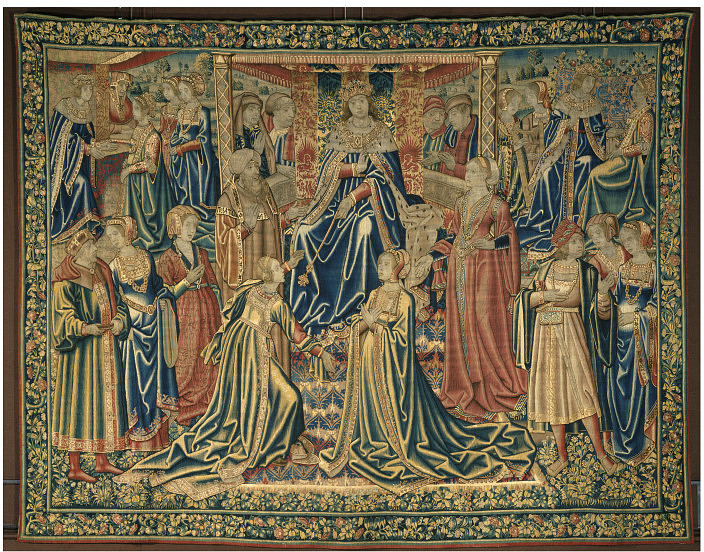 This tapestry was made in Brussels in about 1520. It shows the Old Testament Bible story of Esther |
Esther TapestryLocation: King's Hall/Outer Hall
Description:
Tapestries were very transportable. They could be packed up and moved from place to place. Specialist staff were paid to move them and hang them up.
Tapestries were an easy way to quickly decorate a whole palace but they were very expensive. Only the very richest people could afford tapestries. Mary Queen of Scots' father, James V, had about 200 tapestries. Tapestries with historical, classical or biblical themes were hung in the Outer Hall to help keep visitors entertained while they waited for an audience with the King or Queen. This tapestry depicts a scene from the Old Testament bible story of Esther and Ahasuerus. This subject was a favourite theme for tapestries in the 15th and 16th centuries. Esther was the wife of the King of Persia. The King allowed his chief minister to order the massacre of all Jews in the Persian empire. Esther, who was Jewish, risked her own death by approaching the King to try to save her people. In this scene Ahasuerus is shown seated on a throne under a canopy. He is extending his sceptre to Esther, who is kneeling before him, to show his approval of her request. |
|
Related links: It was James V who really expanded the royal tapestry collection in the 1530s and 40s. He wanted to keep up with other European royal courts. This Web link will take you to more information about the Scottish Royal Tapestry Collection. This tapestry depicts a scene from the Old Testament bible story of Esther and Ahasuerus. This subject was a favourite theme for tapestries in the 15th and 16th centuries. Click here to see the texture. | |